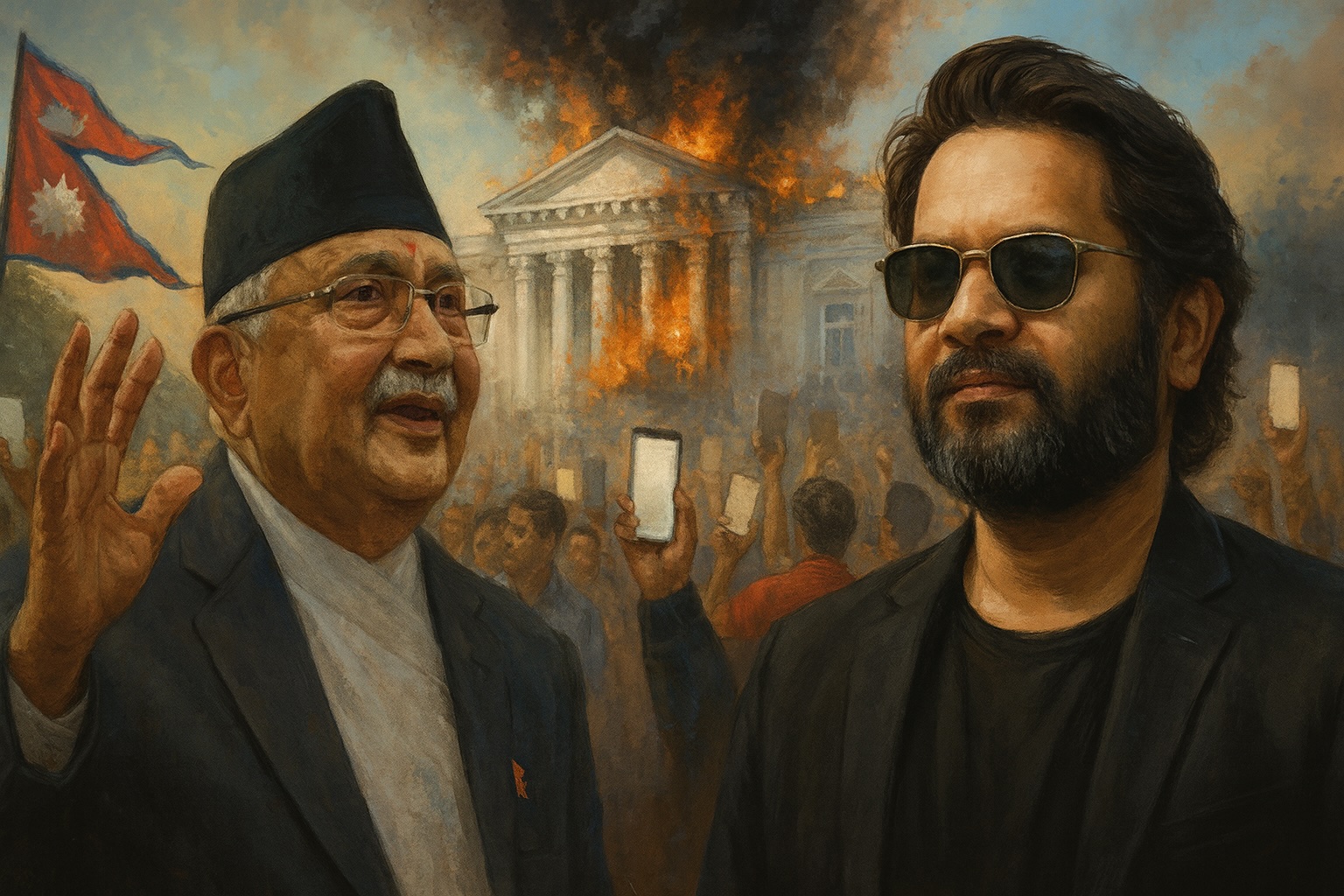From Singha Durbar to Maitighar: Balen, the Architect of Gen-Z

By dawn, Kathmandu’s Maitighar Square no longer felt like an ordinary street corner. Clusters of young people — all under the age of twenty-eight — stood shoulder to shoulder, phones held aloft, screens glowing defiantly. They call themselves “Gen-Z,” a name given by the capital’s maverick mayor, Balen Shah. Just days after Nepal’s government imposed a sweeping ban on social media platforms, the heart of the city had become a stage for something larger than anger. It was a rebellion born in the digital age, one that blurred the line between protest and performance.
The clash has been building for months. Earlier this year, Shah had locked horns with Kathmandu’s chief administrative officer, Saroj Guraagai, barring him from entering the municipal office. The confrontation drew in the central government; then-Minister of Federal Affairs intervened directly, leading a rally of pro-government representatives to reinstall Guraagai in the mayor’s building. That day, Shah appeared cornered, his authority undermined. But today’s scene was different: he was no longer on the defensive. He had rallied the city’s youth, mobilizing them into the streets in what many see as an act of political revenge.
Adding fuel to the fire, a TikTok account had recently gone viral, broadcasting chilling videos depicting Nepal’s Parliament building, Singha Durbar, the Prime Minister’s residence, and the Tinkune intersection engulfed in flames. Accompanied by pounding music and dramatic imagery, the clips stunned viewers across the country. Whether they were anarchic fantasy or part of a calculated cyber offensive, the videos amplified doubts about the government’s ban. If platforms like TikTok — already registered and supposedly regulated — could host such incendiary content, critics asked, what did the ban actually accomplish?
Shah himself has a history of incendiary rhetoric. Last year, he famously threatened to “burn down Singha Durbar.” Now, even as he insists age restrictions keep him from directly joining the rally, his message to Gen-Z on Facebook has emboldened the youth: “Tomorrow’s rally belongs to you. I may be too old to march, but I fully support your voice. Dear Gen-Z, what kind of country do you want to see?”
The tone, as always with Shah, blends local swagger with global flair. The New York Times once described his persona as “homegrown confidence but with rap lyrics scripted in a Western style.” Today’s uprising echoed that description — a South Asian mayor with the posture of a film hero, amplifying his defiance with the rebellious energy of hip-hop, and channeling local discontent through global aesthetics.
The government, for now, has chosen to watch quietly, labeling the gathering a “peaceful protest.” Intelligence agencies, however, warn of something more dangerous: a growing “digital threat” to the state. Critics counter that what the government fears is not chaos, but criticism — and that a ban intended to control crime has instead exposed Oli’s administration to open defiance in the very heart of the capital.
In the eyes of the young demonstrators gathered at Maitighar, today is not merely a protest. It is a rehearsal for the future, a declaration that the next chapter of Nepal’s democracy may not be written in parliament chambers, but in the glow of a smartphone screen. The only question now is whether this digital revolt will fade as a momentary spectacle — or mark the beginning of a longer story that reshapes Nepal’s political destiny.
Gen-Z



![From Kathmandu to the World: How Excel Students Are Winning Big [Admission Open]](https://nepalaaja.com/img/70194/medium/excel-college-info-eng-nep-2342.jpg)
